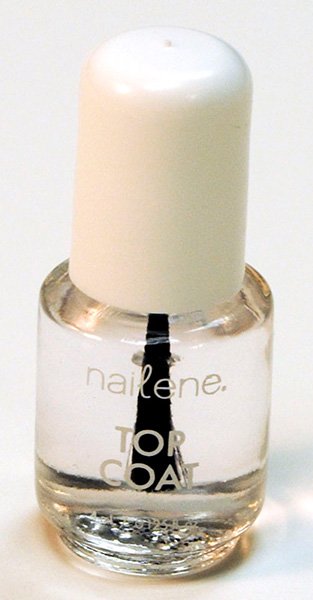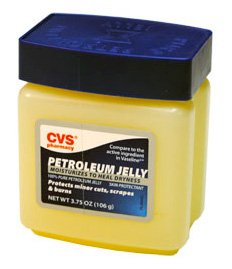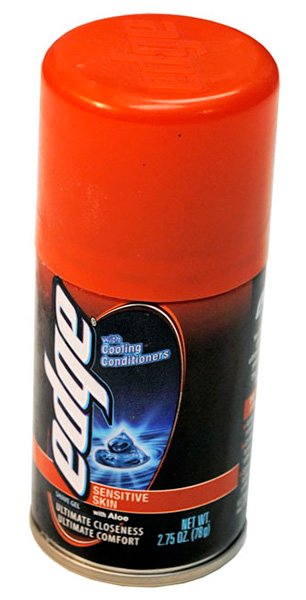by Rescue Tape on August 18, 2010
Here are clever ideas from your fellow boaters that will help to keep you and your boat on budget — and spic and span — for a great time on the water. Here are the top tips for saving time and money on your boat.
Rescue Tape Your Boat
Many products, even if expensive, save big bucks in the long-term. Rescue Tape (www.rescuetape.com) is great for temporary or permanent repairs including burst hoses, leaking pipes (PVC and metal), electrical insulation, whipping rope ends, and much more. Check out Tom Neale’s original review from his boating experiences here.
Stop Squeaky Fenders
Is a squeaky fender rubbing the hull keeping you awake at night? Pour some biodegradable liquid detergent over it. It’ll stop the noise and spot clean your hull at the same time.
Handy Boat Washer
If you’re stuck for a washer, save the caps from large soft-drink bottles and cut to size with a utility knife.
Light Where You Need It
A hand-held dental mirror is a great way to inspect out-of-sight hoses and wiring. A headlight is a great way to keep both hands for the job.
Clean Boat Brass With Lemon
Clean brass with a lemon dipped in salt. Wipe on. Wipe off.

Paint Inside Thru-Hulls To Stop Growths
When you’re hauled out for bottom painting use a small paintbrush to paint as far up into the inside thru-hulls as you can to prevent sea life from growing inside.
Change Clothes Before Varnishing
It might seem obvious, but after sanding your deck, change your clothes before painting or varnishing it if you want that speck-free finish.
Choose The Correct Wrench, First Time!
Crankcase bolts can be tough to reach — and that may mean it’s a battle just to figure out what size wrench you’ll need to fit them. Solve this problem by dabbing motor oil on the bolt head. Then place a scrap of paper over it. Use the image on the paper to find the correct wrench size.
Paper Bag Gasket
If you just blew a gasket but need to get home, then sections of a cut brown paper bag will suffice for a few hours. Use the sharp inner edges of the casing to cut the proper size holes and layer sections for the bag to get the necessary thickness. When you get home, get a new gasket.
Anchor Upwind
Always anchor upwind of the group in a busy anchorage if you can. If another boat drags in the night it’ll drift away from you rather than towards you!
Change Zincs Often
Check zincs in your engine frequently and change as needed. Their rate of deterioration will vary with circumstances. A depleted zinc can result in significant damage to your engine, and costly repairs. The same goes for shaft and other zincs underwater outside the hull.
Engine Room Cleaner
Don’t have any expensive hand-cleaner nearby after a dirty day in the engine room? Raid the galley cupboard for a little olive oil to rub on your hands. Clean off with a paper towel, then wash with soap and water.

Inner Tube Gaskets, Values, And Chafe Guard
Usually tire shops will give away old inner tubes. Cut to fit, as needed, for permanent or temporary (as is appropriate and safe) gaskets, flapper valves, insulation, chafing protection, diaphragms, and many other applications.
Clean Railings With Old Socks
Is there anything more frustrating than cleaning what seems like miles of railings? A tip to make things a little quicker at least, is your old sock drawer. Put one over your hand, dip it in wax and off you go. Likewise, use an oven mitt when you’re waxing a hull.
Small Varnish Job? Use Nail Polish
For small varnish jobs, put some in an empty nail polish bottle and keep it handy. That way you don’t have to keep opening a big tin and cleaning brushes every time you need to touch up a ding.

Boat Storage Solutions
Wise storage allows for tools, spares, and food that can help you save money because you have them aboard when you need them. Try Space Bags for storage of dry clothes and bedding (rather than dedicating a big locker space for their storage). Also try vacuum-bag sealing systems for food storage. You can also lightly coat metal spares or specialty tools in oil, and vac-pack them to keep them corrosion- and rust-free.
Beat The Boat Slings Blues
Does the boatyard have a hard time positioning the slings every time you’re hauled? To help prevent accidental damage to underwater gear, visually note the correct locations of the slings, and afterwards paint a small mark, or have graphics made, indicating exactly where each sling goes on the hull/deck joint.
How Much Anchor Chain?
If you’re always wondering how much anchor chain you’ve put out, mark the links with a neon paint spaced at 25-foot intervals. Paint one mark for the first 25 feet, two marks for the second and so forth. Make the marks big and you’ll see them from the flybridge. And remember, put out enough anchor rode or chain to equal at least five times your water depth.
Keep Electronics Moisture Free
To prevent a potentially dangerous moisture buildup in electronics stored on board, put some dry rice near them to absorb moisture. Heat the rice in a clean, dry frying pan until it browns. Place the brown rice in a cheesecloth bag to keep the grain from getting into the equipment and harming it. Check the bags frequently and replace as necessary when the rice becomes moist.
Wash Your Chain And Anchor
Anchors and chain are expensive. Extend their lives by washing your chain and anchor with fresh water after every use and, if you can, store it dry. If you don’t have enough fresh water aboard, rinse it every time you return to the dock. Periodically remove all chain from the chain locker and clean salt and mud/sand from your locker with a thorough fresh-water rinse.
Spray Your Docklines
Your dock lines and shore power cords can act like a stairway for bugs and ants to get on your boat. Call a halt and keep them away by spraying with ant repellent where they touch the dock.
Keep Bugs Off The Boat
Unwrapped spearmint gum on shelves will keep roaches and other bugs away from your food.
Stop Spray Can Corrosion
Hate those rust rings? Store metal spray cans of corrosion-preventative oils and other related products upside down on their plastic caps and rotate them periodically. Spray a light layer of rust preventative such as WD-40 on cans to retard rust.
Loosen Up Docklines
Do you have stiff anchor or dock lines? Add half a cup of fabric softener to two gallons of water and soak the lines overnight. Let them dry away from the sun and they’ll be as flexible as new!
Getting Rid Of Boat Mildew
Sprinkle talcum powder on rugs, deflated dinghies, or anything else that is susceptible to moisture and mildew and roll them up. The talc will absorb most of the mildew and make cleaning easier in spring. If you do find mildew, kill it with white vinegar — safer on surfaces than bleach.

Get rid of boat mildew with white vinegar
Protect Your Boat Props
Get creative with your garbage bags and save yourself spring-cleaning growths. Wrap a big black bag over your outboard props and tape it up, even if it’s in the water all winter. Don’t forget to take it off before you start up though!
Look After Your Boat Head
If you’re not going to use your head for a while, flush cooking oil down it to lubricate the works, and pour freshwater in to retard corrosion. Then, put plastic wrap over the toilet bowl. It’ll stop that ring from forming in the bowl and cause less evaporation. (Just don’t forget to take it off before you use it again!)
Solenoid Saver For Boats
Solenoids from auto parts stores will often suffice for other solenoids aboard such as those for an anchor windlass, electric winches, and ignition-transfer switches. However they must equal the specs of the unit you’re replacing, and meet relevant safety requirements, most importantly ignition protection for any used in the engine compartment. If moisture protection is required spray on a corrosion blocker.
Teak Care
Teak can be cleaned with leftover tea provided milk and sugar haven’t been added!

Clean teak with leftover tea
Stop Dockline Chafing
To stop lines chafing off the dock or cement, feed the line through about a foot of flexible but hard-wearing tubing, slightly larger than itself, and position the tube on the line where it’s rubbing. If you want it to stay put, drill a little hole in the tube, knot a string through it, and tie the end of the string to your line to keep the tubing positioned exactly. Such a tubing set-up will also stop chafing where the anchor line rubs against the bow.
Cleaning Your Boat Head
Got a bottle of flat cola aboard? Don’t throw it away, throw it into your head and let it sit for an hour. It makes a great nontoxic toilet-bowl cleaner.
No More Frayed Boat Lines
To call a halt to unraveling lines, clip the fraying ends, then dip the ends into shellac or liquid electrical tape. (Or learn to whip your lines; it’s fun and so easy.)
Goodbye Boat Gunk
Rather than splash on goo removers you’ll only use once or twice, grab some talc from your bathroom, mix it with a tiny amount of water to make a paste, and rub it onto your deck with a clean rag. Let it sit for a short while and rub off.

Money Saving Tip: Petroleum Jelly
Unstick Boat Zippers
Lip balm is not just for your mouth, cooking spray is not just for your frying pan, and petroleum jelly is not just for your baby’s behind. If your zippers are stuck or your canvas snaps difficult to snap, then try a little dab of any of the above. Graphite pencil, candle wax, and WD-40 are other possibilities for your jammed zippers.
Cleaning Off Bottom Paints
If you sprayed your bottom and there are tiny flakes on your cabin windows, use Murphy’s Oil soap and water. It’ll work even weeks after the paint has dried.
No More Boat Bugs
Seal small holes in cabin window screens by pushing the mesh back together and sealing with clear nail polish to keep the small bugs out.
Freshen Up Your Boat Cabins
You don’t need expensive air fresheners in your cabin. Get dryer sheets such as Bounce, tuck them into corners and behind cushions on your boat. They help with the stale air and are said to repel insects.
Sleeping Better Aboard
Memory foam from Wal-Mart and other inexpensive sources works for mattress toppers, or for full mattress replacement. It’s easy to cut to shape for your boat’s beds. For humid areas, the egg-carton shaped foam also can be used under your existing mattress, allowing some air circulation, and additional softness.
Kitchen Cupboard Miracle For Boats
Baking soda and vinegar are the magic solutions to a lot of your boat troubles. A paste of baking soda is great for stain removal on soda spills, mustard drips, and even pen marks on your vinyl seats. If your wiper blades are streaking but aren’t quite ready to be discarded, soak them in a mixture of baking soda and water. Vinegar is also something of a wonder product onboard. Use it for flushing your water maker (check with the manufacturer first), as a raw-water head deodorizer, freshwater hose cleanout, environmentally friendly drain unclogger, gelcoat shiner, and sea-salt stain remover.
Cleaning Upholsteries
Dirt on certain upholsteries can be easily removed with a dollop of shaving cream. Ink and mustard stains come out of vinyl seats easily with a light rub of acetone or oil-free nail-polish remover.

